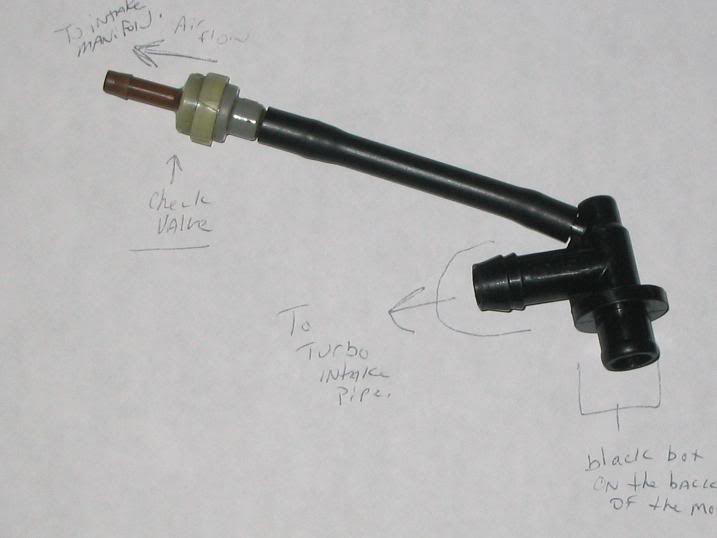catch can question
#1
I was just on the hmt website and noticed most of the setups were not running oil catch cans. One guy with a t3/t4 even had his set up like a n/a intake(hose from valve cover to charge pipe.) My question is how important is it to use a catch can or will a breather filter suffice?
Thanks.
Thanks.
#2
A catch can on a turbo car which was previuosly N/A is to relieve crankcase pressure when you hit boost. When the intake mani see's boost the pcv valve shuts which causes the crankcase to pressurize. I've seen many people run without one and no probs at all. I personally run one.
#3
for a turbo'd car you do not want a hose from the valve cover to the charge pipe.
it would go from the valve cover to the catch can and then to the intake side of the turbo.
the catch can will help the motor in the long run.
just make sure you add something like steel wool to filter out the oil particles.
the sticky even shows the hmt one:
https://www.homemadeturbo.com/forum/...threadid=28135
it would go from the valve cover to the catch can and then to the intake side of the turbo.
the catch can will help the motor in the long run.
just make sure you add something like steel wool to filter out the oil particles.
the sticky even shows the hmt one:
https://www.homemadeturbo.com/forum/...threadid=28135
#4
you could do it like this:

or like this:

i made myself this one outta pvc pipe,a clear plastic hose,
a vacuume T and jb weld:

i hooked it up like in the first diagram by just adding a breather filter to the valve cover and a line from the intake to the catch can. i filled up the catch can with steel wool so it would filter out the oil vapors.

or like this:

i made myself this one outta pvc pipe,a clear plastic hose,
a vacuume T and jb weld:

i hooked it up like in the first diagram by just adding a breather filter to the valve cover and a line from the intake to the catch can. i filled up the catch can with steel wool so it would filter out the oil vapors.
#5
so if i were to do my catch can like the first drawing, i would still need to modify my pcv system correct? like where you have on the first drawing the pcv valve port, i would set up the system like this right?:


#6
so just to make sure, i could do my pcv/catch can setup like this right?:

if its kinda hard to see refer to my pic in the above post. where the check valve would go to intake mani where the pcv valve port is. then the pcv valve in the pic in the above post will go to the catch can rather than turbo intake, then the catch can will go to the turbo intake. and the other end of the pcv valve will go to the black box.
this should work just fine right?

if its kinda hard to see refer to my pic in the above post. where the check valve would go to intake mani where the pcv valve port is. then the pcv valve in the pic in the above post will go to the catch can rather than turbo intake, then the catch can will go to the turbo intake. and the other end of the pcv valve will go to the black box.
this should work just fine right?
#7
I understand how it works and why it works. My question is, what happens if the checkvalve is removed and just a fitting is used in the PCV valves location? Would this cause a leak? Because then you only need a little vacuum to circulate the vapour instead of worrying about having enough vacuum to open the valve too.
#9
Well duh, but what im saying is if you have a way to keep constant vacuum on the port then in theory you dont need the check valve at all because if there is constant vacuum the air will only flow one way anyways.
#10
^ thats true. but think about how much it costs for a check valve, and how long it would take to install one if you are installing a catch can and pcv system anyways. i would rather spend $5 extra bucks and 5 extra minutes and just be safe.








